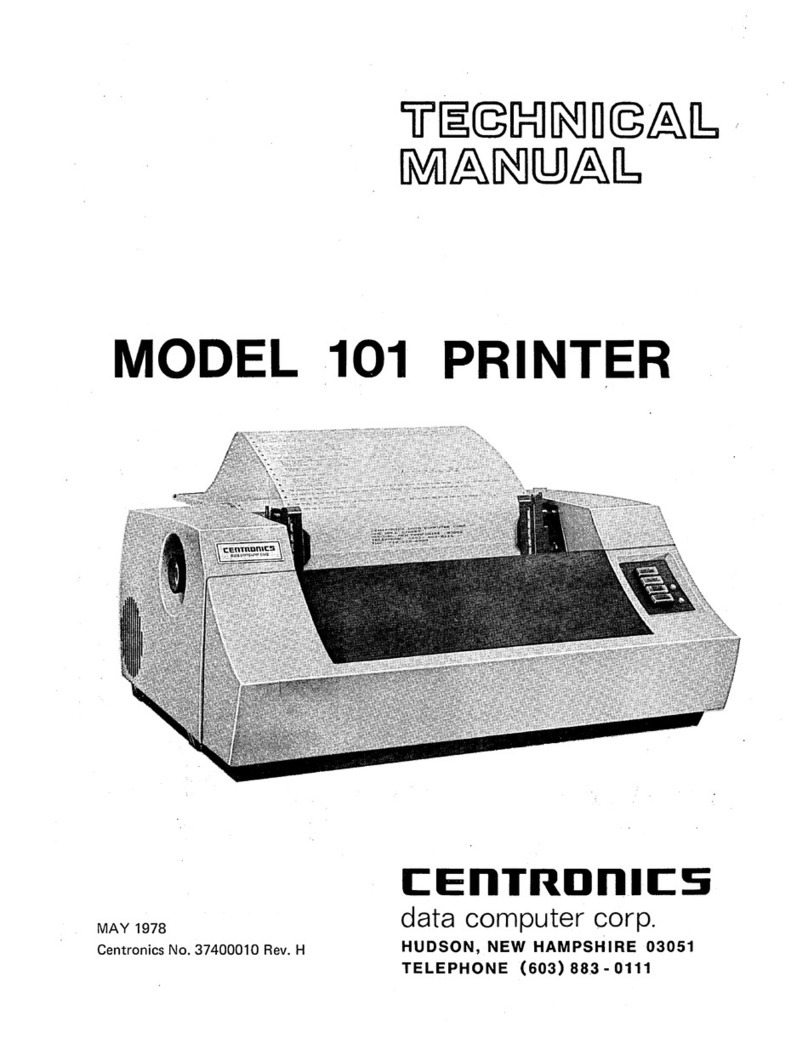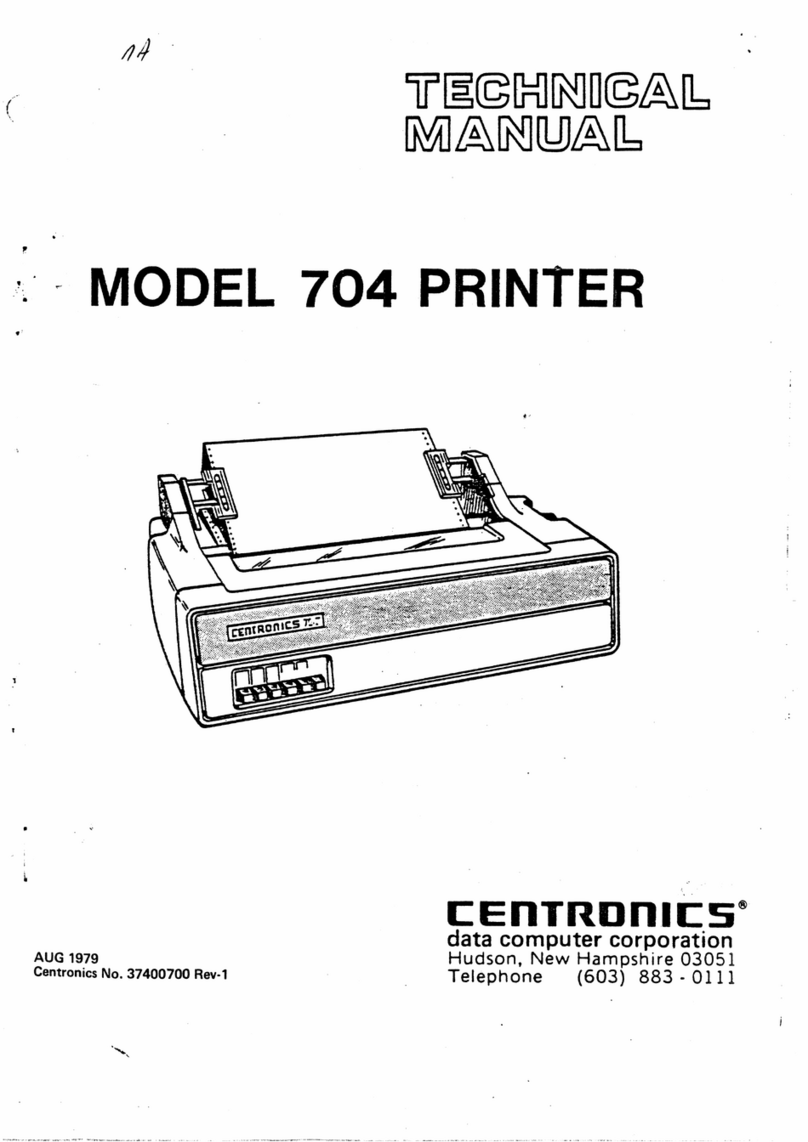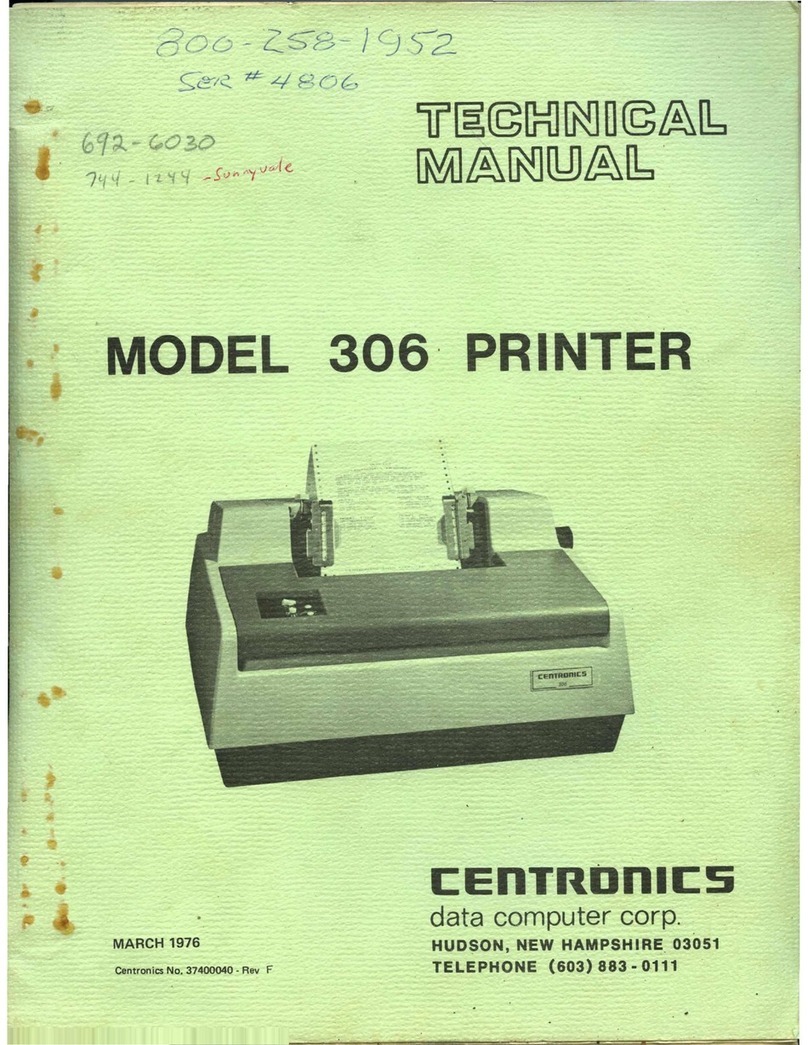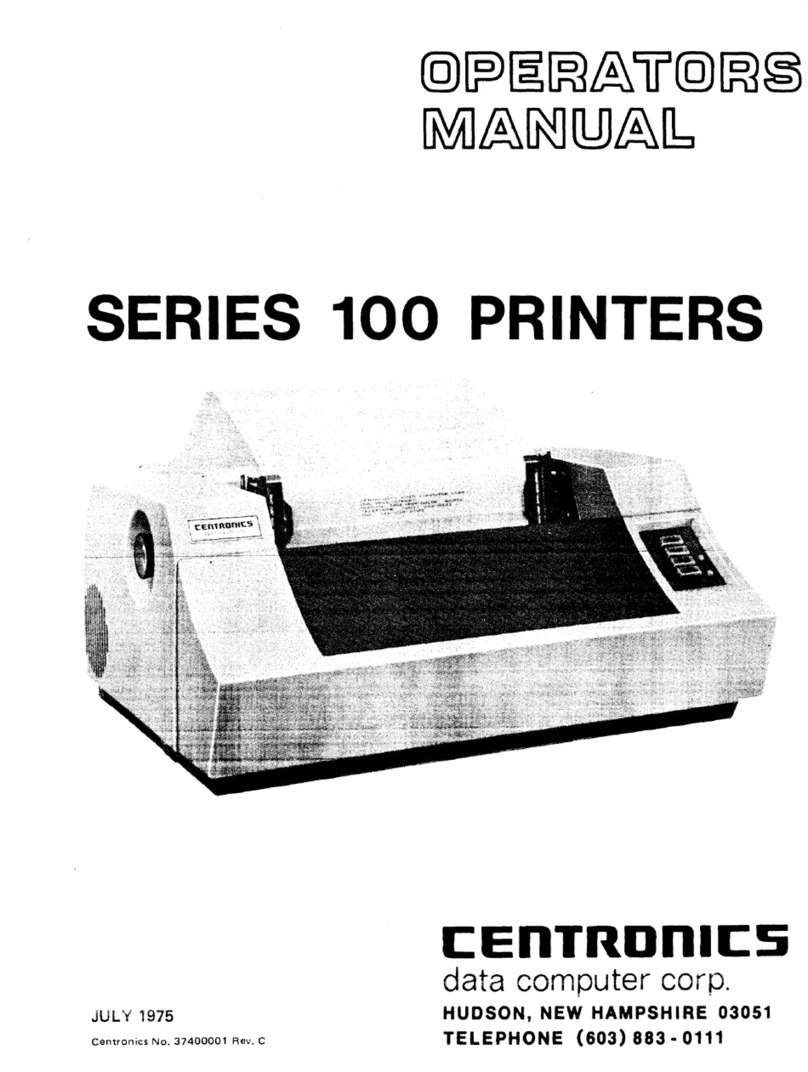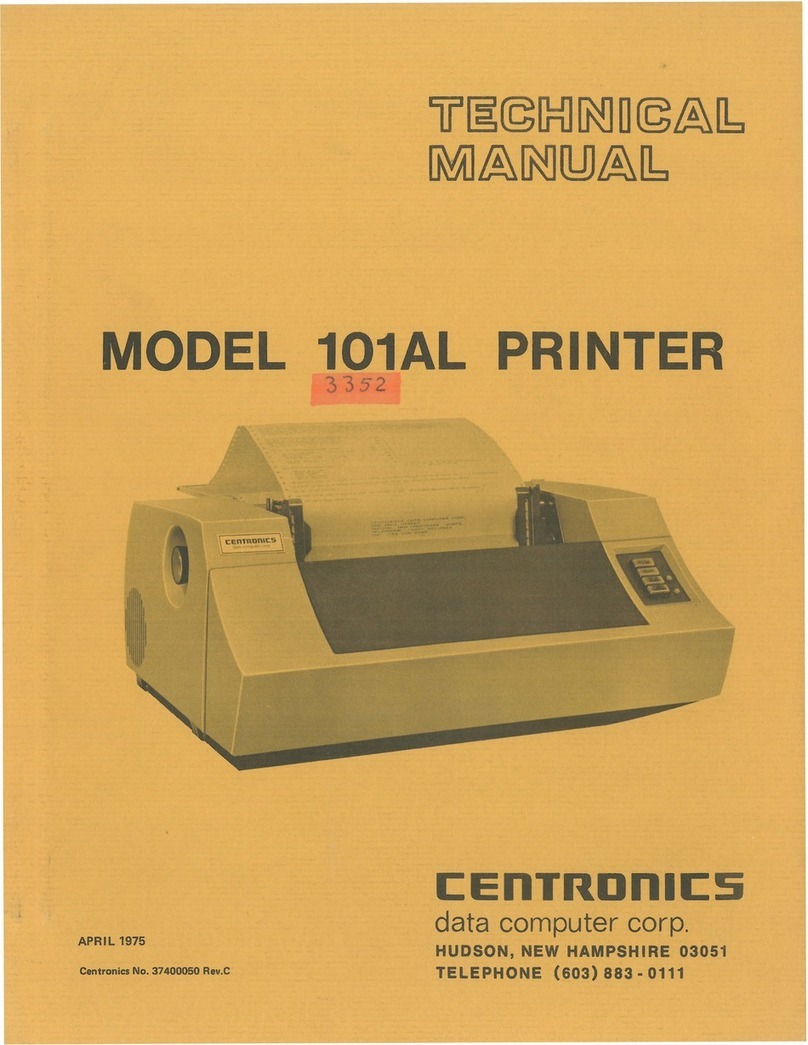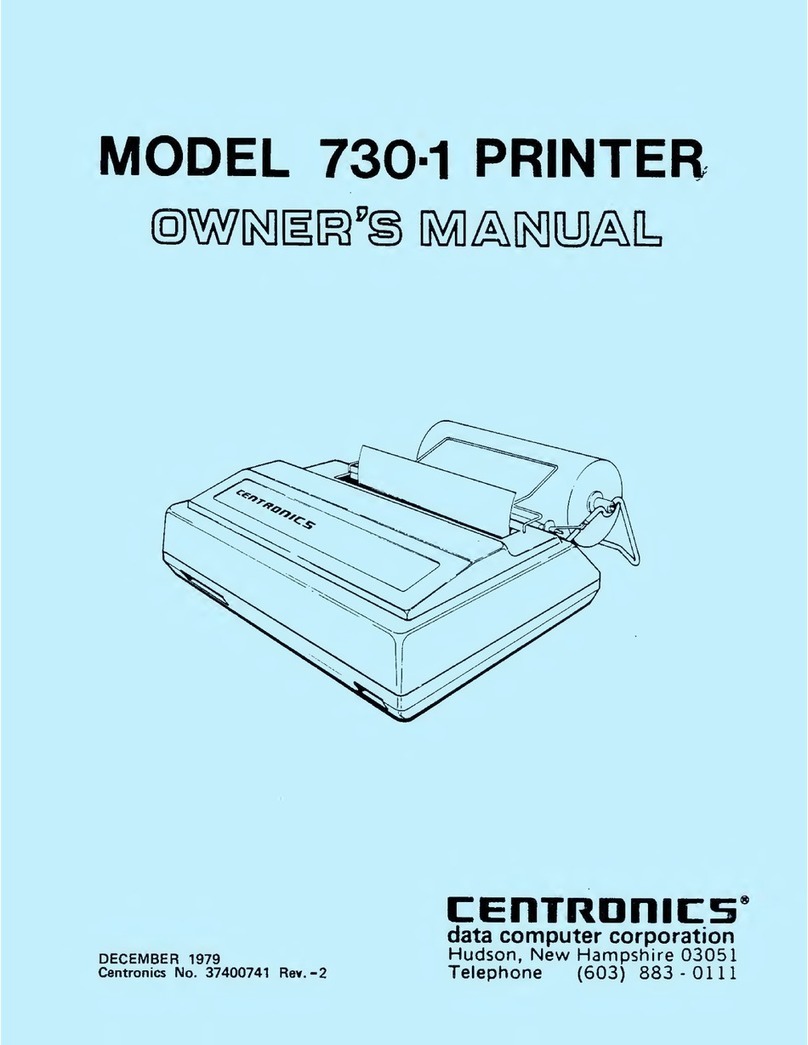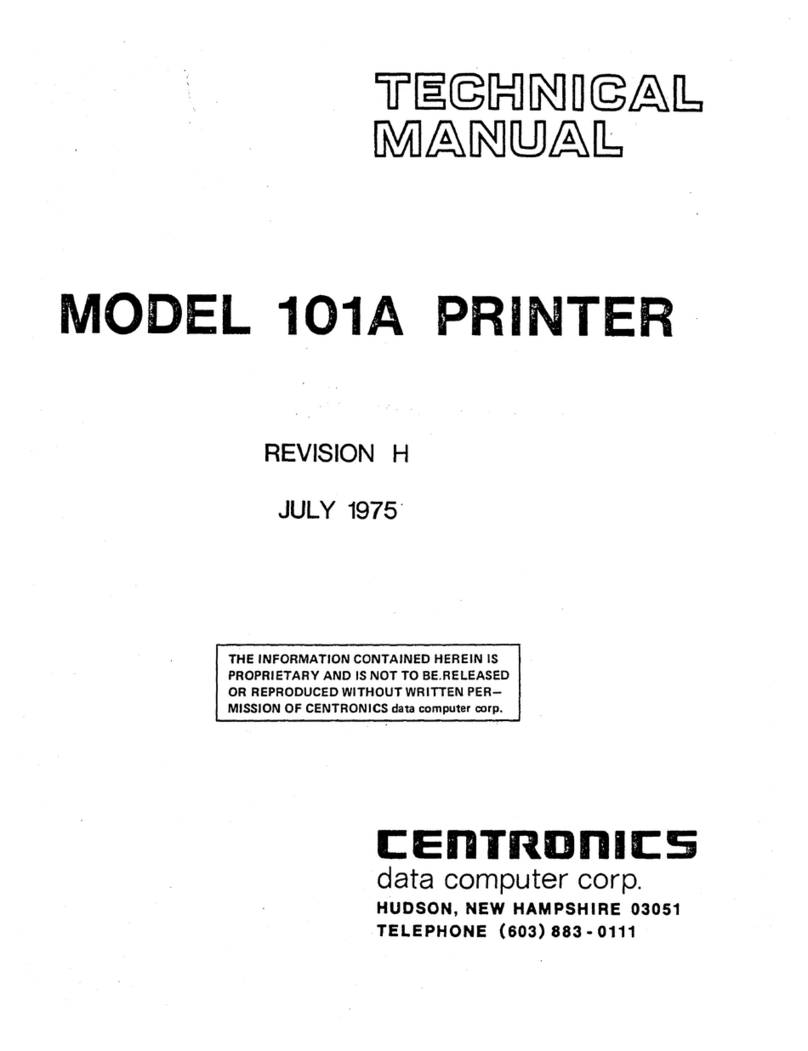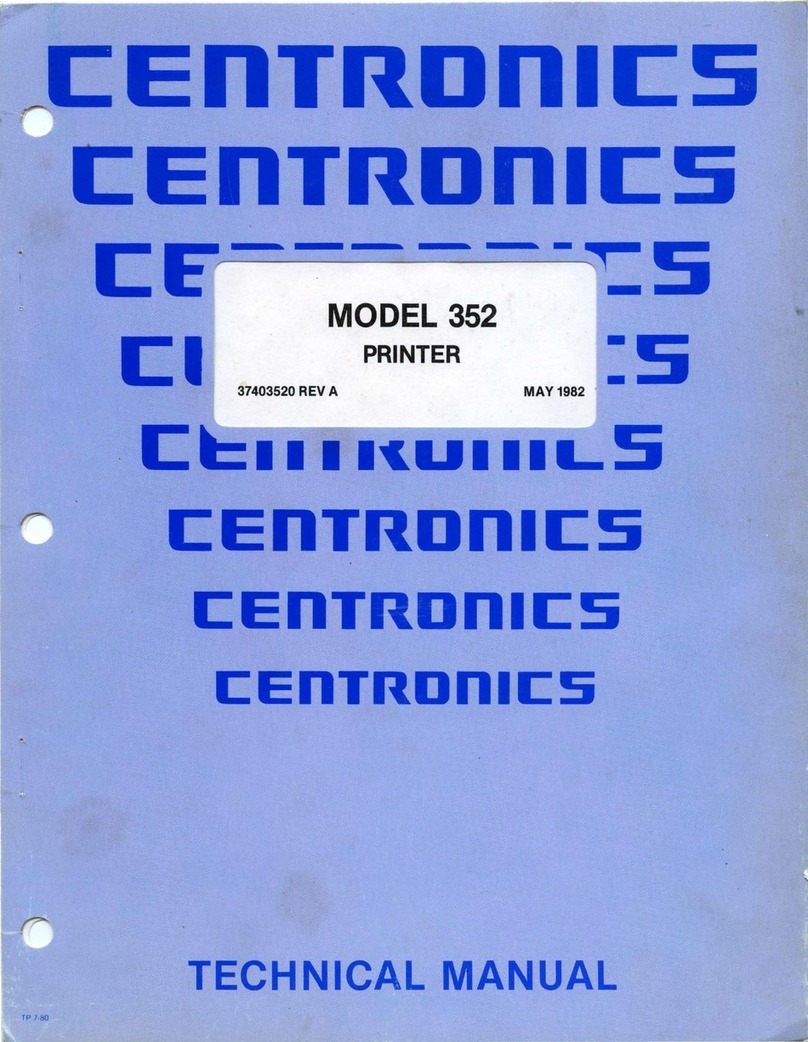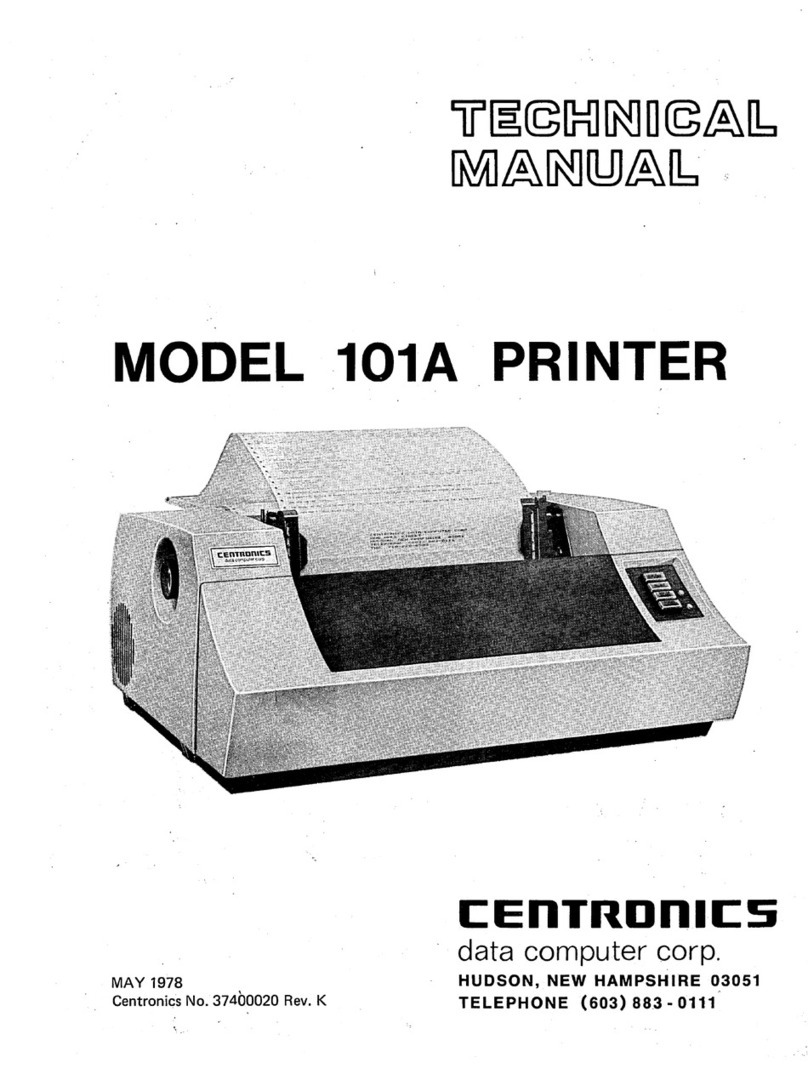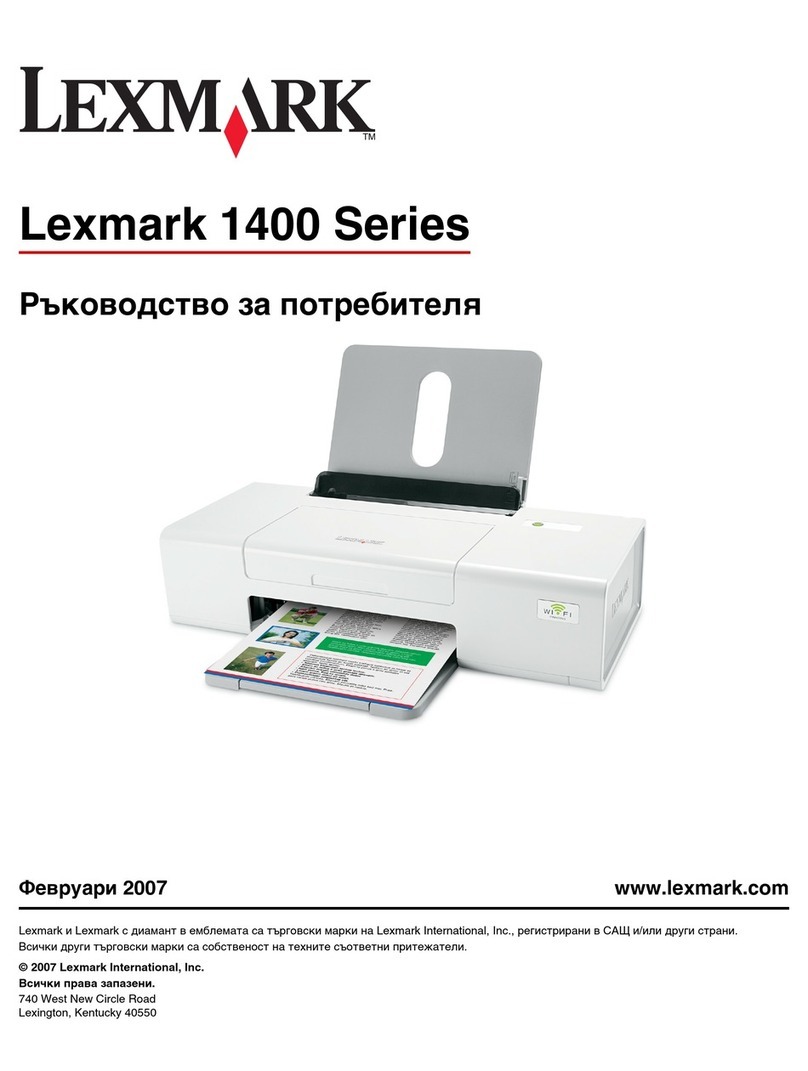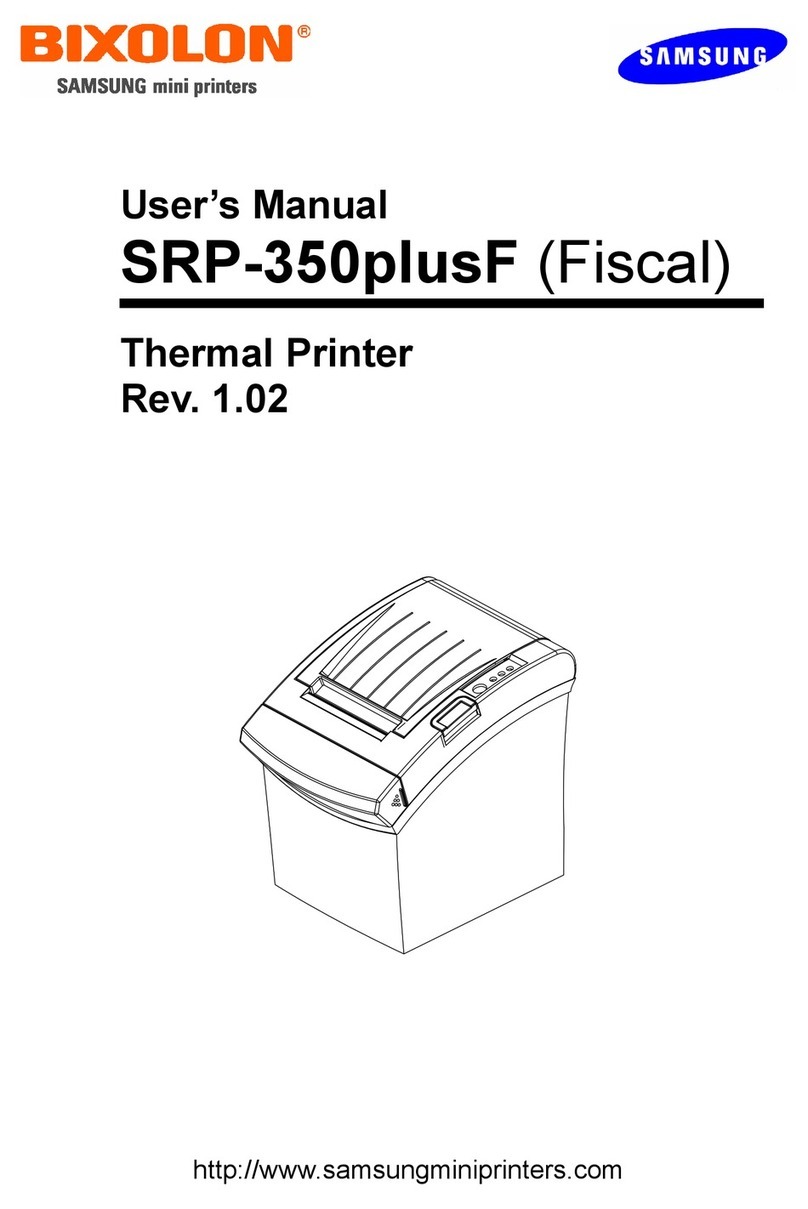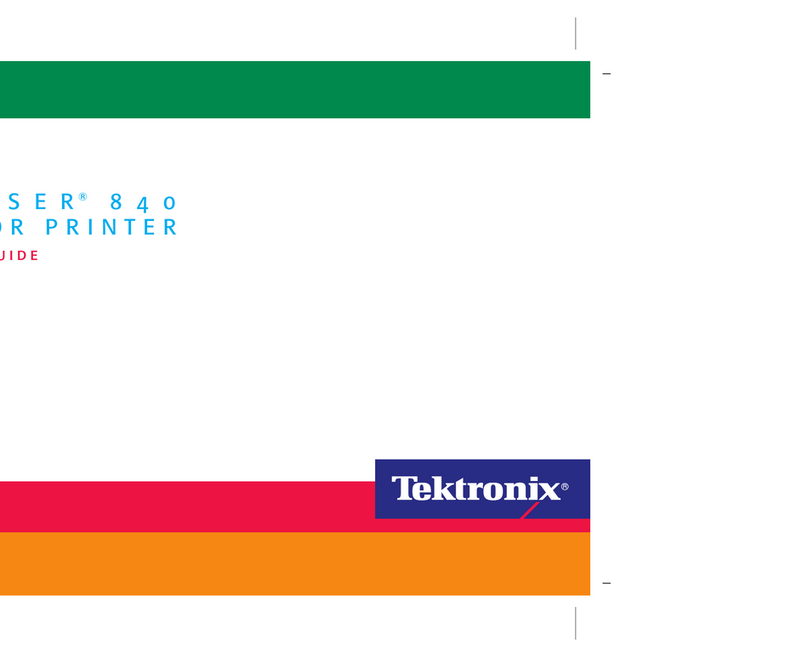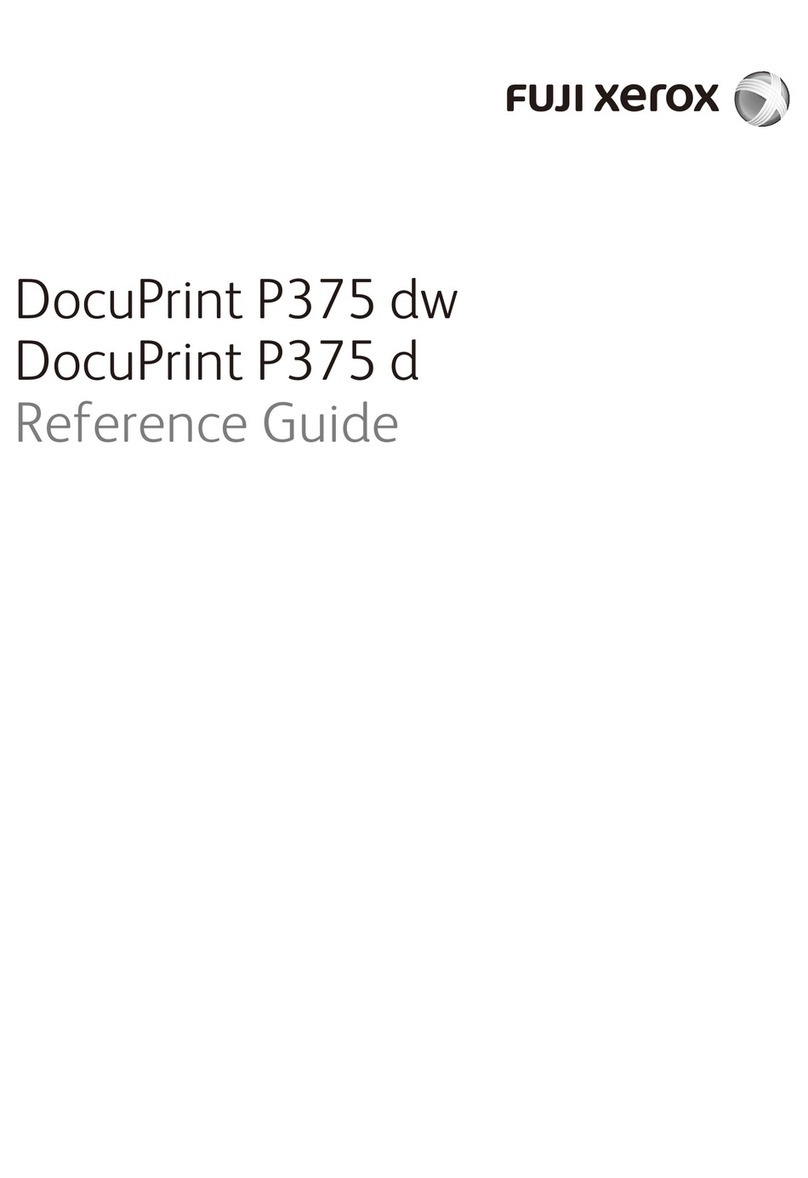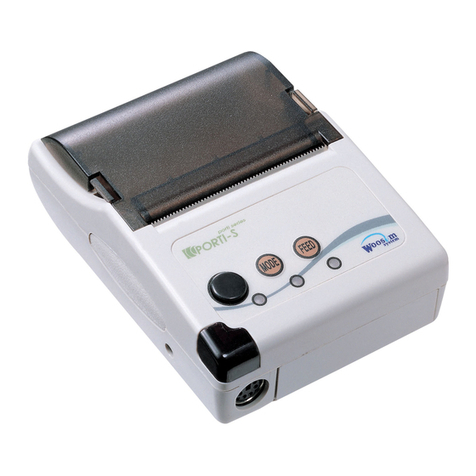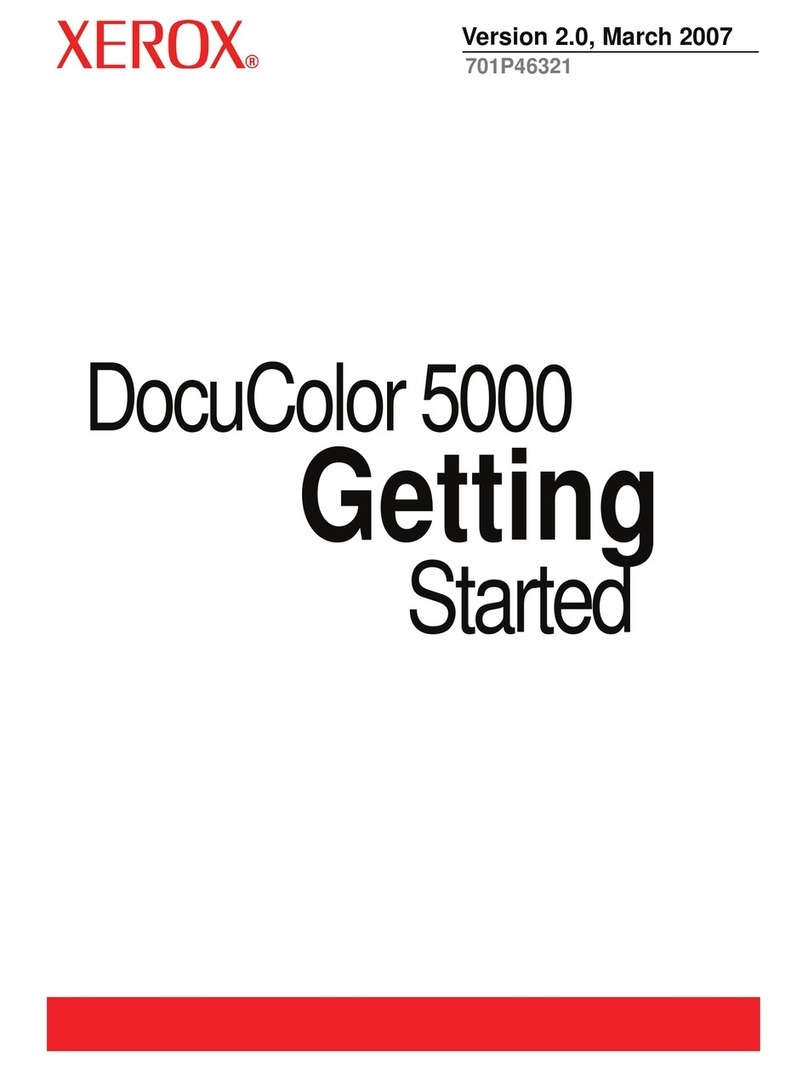SECTION
I
INTRODUCTION
This
manual
describes the
Model
lOlA
printer,
manufactured
by
Centronics
Data
Computer
Corporation.
It
provides general information, detailed theory of
operation
and
maintenance
information enabling field service personnel to
main-
tain the printer.
For
serial input or other detailed interface information, a
separate
document
for
each
interface
is
published for
your
reference.
pose.
The
manual
is
grouped
into eight sections,
each
with
its
specific pur-
Section I -
INTRODUCTION~
introduces the reader to the
scope
and
content of the
manual,
and
provides the reader
with
a general description of the printer.
Section 2 &3 -
INSTALLATION
&
OPERATION,
contains additional in-
stallation
and
operation data not included
in
the
Operators
Manual.
Section 4 -
Section 5 -
Section 6 -
Section 7 -
Section 8 -
THEORY
OF
OPERATION,
contains a detailed description
of
each
major
operation
performed
by
the printer
electronics, including
flow
chart,
timing
diagrams
and
circuit
diagrams.
REMOVAL,
REPLACEMENT
AND
ADJUSTMENT
PROCEDURES,
includes
step-by-step
removal
and
replacement
proc~dures
for
all
major
assemblies
and
sub-assemblies
in
the printer.
MAINTENANCE,
includes preventive
maintenance
procedures,
and
recommended
spare parts
list.
ELECTRICAL
DRAWINGS
AND
LIST
OF
MATERIALS,
contains a
complete
set
of schematic, wiring
and
component
board
layout
diagrams
and
their associated
list
of materials
for the electrical portion of the printer.
MECHANICAL
DRAWINGS
AND
PARTS
LISTS,
includes
all
printer
assembly
drawings
and
their
associated part
lists
for the
mechanical
portion of the printer.
1-1
Rev.
C

